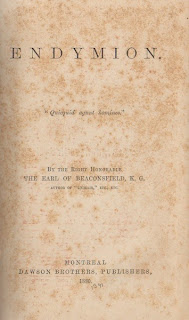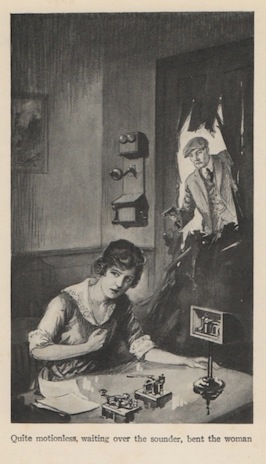Delightfully charming, unconventionally sentimental schoolgirl verse from
Ethel Ursula Foran, whose
"New Year's Day" has proven to be by far the most popular poem posted on this blog. Here a very young Miss Foran turns her attention towards favourite things material:
The dead, the embalmed, the mausoleumed... I'm certain that this is the first verse I've read to feature the word "sarcophagi".
You chat and live with dead men of thought
As you sit and pursue the words they wrought.
They are peaceful companions that never betray,
Nor dispute, nor quarrel, for silent are they.
'Tis lovely, though one cannot escape the sad thought that Miss Foran is herself now a peaceful companion.
What I find most intriguing comes in the poet likening aging books to "Egyptian mummies of old." Might this be a clever allusion to the oft-repeated myth –
or is it? – that linen wrappings of mummies were used by nineteenth-century New England papermakers?
I suppose we'll never know.
Never mind.
As we nurse our respective Dominion Day hangovers, I present the six oldest Canadian books in my collection.
The Poems of Thomas D'Arcy McGee
Thomas D'Arcy McGee
Montreal: D. & J. Sadlier, 1870
Purchased four years ago – US$8.00 – at an antique store in Point Pleasant, New Jersey. At my aunt's 88th birthday dinner the previous evening I'd bragged that only one Canadian politician had ever been assassinated: McGee. I am a joy at parties. No invitations declined.
Endymion
The Right Hon. Earl of Beaconsfield
Montreal: Dawson Brothers, 1880
Not by a Canadian, but it was published in Canada, I picked up
Endymion three years ago for $1.99 at our local Salvation Army Thrift Store. The Dawson Brothers –
Samuel and William – were once Montreal's preeminent publishers and booksellers; I came along a century later. A bookish lad raised in the oldish suburb of Beaconsfield, I knew Benjamin Disraeli's name before those of Messrs Wilson and Heath.
Tecumseh: A Drama
Charles Mair
Toronto: Hunter, Rose, 1883
A first edition of the Confederation Poet's epic about the great man, this was a gift from a friend who had rescued it from a box of rejected donations to the McGill Library Book Sale. Most generous, I think you'll agree.
A Popular History of the Dominion of Canada
Rev. William H. Withrow, D.D. F.R.S.C.
Toronto: William Briggs, 1885
How popular? Well, my copy ranks amongst the sixth thousand. Purchased in 2000 for forty dollars – I paid too much. Though I've never taken so much as a glance beyond the title page, I'll bet that it's a more interesting work than
Neville Trueman: Pioneer Preacher, Rev Withrow's preachy War of 1812 novel.
The Other Side of the "Story"
[John King]
Toronto: James Murray, 1886
A new acquisition, found just last week at a bookstall in London, Ontario. Storm clouds were gathering. In his "INTRODUCTORY", Mr King describes this publication as a
"brochure", but at 150 bound pages I'm going to say it's a book. I've not yet had a chance to properly investigate its contents, so know only that it is a critique of John Charles Dent's
The Story of the Upper Canadian Rebellion (Toronto: C. Blackett Robinson, 1885). Price: 50¢.
Sam Slick, The Clockmaker
Thomas Chandler Haliburton
New York: John B. Alden, 1887
Purchased thirteen years ago for US$8.00 from a Yankee bookseller, this is surely the skinniest edition of the CanLit classic. Thin, pulpy and grey/brown in colour, the paper is typical of the publish and crumble era. I can write, with great certainty, that no mummies were destroyed in it's making.









+.png)






















































